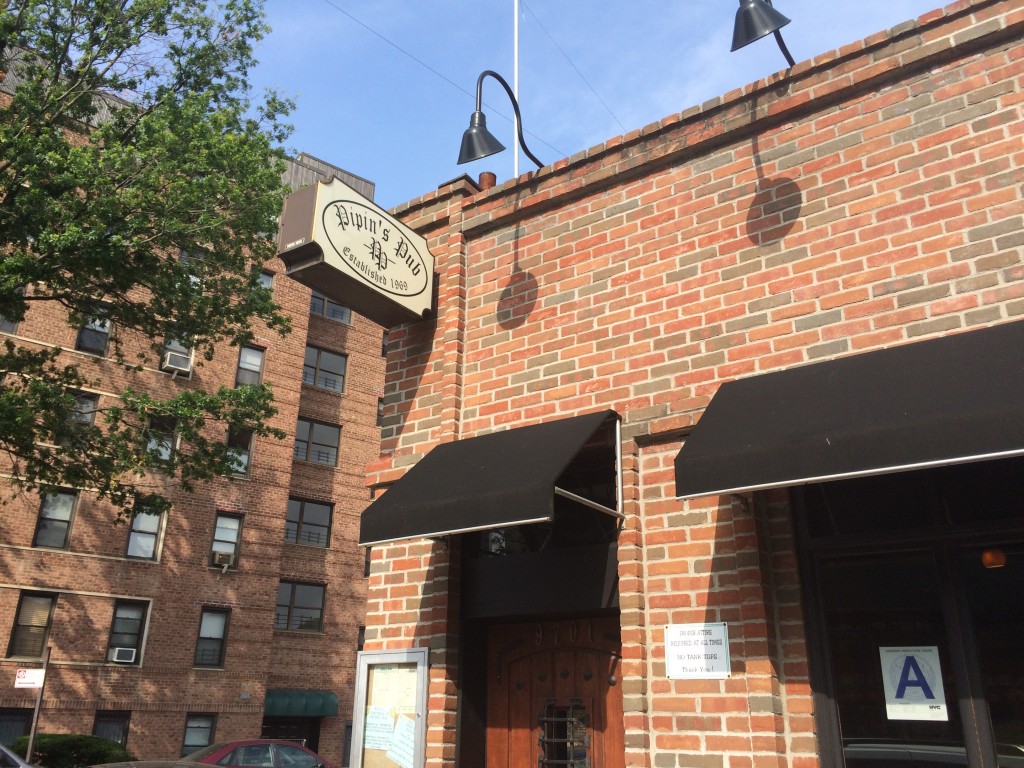Just how big will the new development coming to the corner of Pipin’s really be? That’s the question on many Ridge residents’ minds as they prepare for yet another development to settle down in the neighborhood.
The approximately $10 million project – which Pipin’s owner Stephen Oliver told this paper will close the long-standing watering hole for at least a year, if not more – will encompass the space next door to Pipin’s, a long vacant site that once was occupied by J.T.’s Restaurant, and include 20 units (15 two-bedrooms and five one-bedrooms).
The property is located largely in a zoning district that allows for dense construction with a maximum height of 70 feet. The back of the lot, on the other hand, is in a zoning district where the maximum density is far lower, and which has a maximum height of just 35 feet.
Other details – including the name of the Ridge-based developer – have yet to be released.
Perhaps most concerning to residents is just what the project handler will do with the air space Oliver said the developer has acquired from Sclafani-Vitale, a medical office next-door to the old J.T.’s.
Air rights, also known as development rights, refer to the empty space above a property. In essence, AirRightsNY.com explains, “If a building adjacent to a construction site is lower than neighborhood zoning laws allow, the developer can acquire the building’s unused air space, add it to his or her project, and erect a taller building.”
In cases of contextual zoning, however, Department of City Planning Press Secretary Rachaele Raynoff explained, despite purchasing air rights, those lots would most likely still have to comply with the neighborhood’s zoning laws.
“The way I always explain [development rights] is that it’s a ratio thing. So, say you have an eight-ounce glass of water, and (in terms of development rights) that can be either a short [eight-ounce glass of water] or a tall, thin eight-ounce glass of water but what matters is the volume inside – it can be in different forms,” explained Raynoff, “but that’s a little more complicated in contextual districts (like Bay Ridge) because they have height limits. In non-contextual districts, for example, you can have a very tall glass of water, but that might not be the case in a contextual district.”
Community Board 10 District Manager Josephine Beckmann echoed Raynoff, confirming that – air rights or no air rights – the development will be capped at its zoning cut-off.
“The preservation really falls on the mid-blocks,” she went on, explaining that explaining that, when the neighborhood was rezoned a decade ago, strips like Third and Fourth Avenue were deemed areas of potential growth. Still, she said, there’s a limit to the buildup.
“That’s why we chose to become a contextual district,” she said. “There’s a cap.”
Nonetheless, with design yet to be announced, Beckmann said a number of residents have voiced their concerns.
“The zoning book has been out on my desk all week, I’ll say that,” Beckmann joked, noting that – for the most parts – residents have been calling with one question: What is happening here?
“This, I think, is one of the first times [Bay Ridge] is really dealing with air rights,” said local preservationist Victoria Hofmo. “Third Avenue is predominately storefronts with residences above and this development, I think, is really breaking that whole pattern. I think it’s a charming strip so to lose the corner building that’s so lovely and has this great history with us, that’s very unsettling.”
Pipin’s, located at 9701 Third Avenue, will be annexed by the development so that it can re-open down the pipeline in a larger space within the project’s first level.
The term “air rights,” as pointed out to this paper by Hofmo, comes from a Latin phrase which translates to “For whoever owns the soil, it is theirs up to Heaven and down to Hell.”
“We don’t know what exactly they’re going to do, and that’s concerning,” said Hofmo. “Bay Ridge has a very specific sense of place, and [these developments] make me concerned about the future, that everybody is just going to keep going up to the max.”
Local activist Justin Brannan had another take on development in Bay Ridge.
“In recent years, all five boroughs have been experiencing remarkable growth as more and more people move to New York City,” he told this paper. “And Bay Ridge, God bless it, is part of that progress – but as we all know that progress brings some concerns. But the values that make Bay Ridge a special place and a unique neighborhood don’t have to be lost.
“As long as we continue to strive to preserve the unique character of neighborhoods such as Bay Ridge, by respecting the context of the existing area, then the natives will have nothing to fear as developers create more room for new residents and Bay Ridge, like other parts of the city, will reap the benefits through the growth, expansion and enhancement of its commercial, cultural and civic profiles,” Brannan added.
Beckmann, hopeful that the design will remain as-of-right, sees the project as a potential for growth.
“I think that growth is always built into community zoning,” she said, “it’s just a matter of responsible growth and making sure that it’s good planning – and that’s what the board is here for.”
By press time, the city’s Department of Buildings did not respond to a request for information concerning any permits that may have been applied for at the site.
Updated at 2:50 p.m. to include further public commentary.

 On the Avenue: Community golfs ‘fore’ good cause
On the Avenue: Community golfs ‘fore’ good cause  On the Avenue: Annual ‘Battle of the Bartenders’ to bring new cocktail to 3rd!
On the Avenue: Annual ‘Battle of the Bartenders’ to bring new cocktail to 3rd!